The poodle is ranked by the AKC (American Kennel Club), of the most popular dog breeds in the United States.
If you’re looking for a loyal, smart, and affectionate dog that’s also remarkably family-friendly, the poodle with its luxurious curly coat is one of the most intelligent choices.
According to the AKC, there are only three specific types of poodles – more on these below – but you can find many other variations and sub-types within this fascinating breed. Today’s guide will help you establish which of these poodles, if any, makes the smoothest fit for you and your family.
What Is a Poodle?
Although the modern poodle gives the appearance of being pampered pets, the breed was originally developed for working purposes.
The poodle is named for the German word pudel (splashing around in water). The first poodles were water retrievers.
When you look at the elaborate coats of these dogs, you might mistakenly believe this is luxuriant fur is all style and no substance. The poodle’s coat, though, originated for practical reasons. The coat has a trimmed section, ensuring that poodles do not get snagged on underwater debris. With such long coats, the organs and joints of these dogs are well protected from icy water, too. That said, most modern poodles spend little time in the water.
Poodles have the following characteristics:
- Straight muzzles.
- Lengthy ears that hug the head.
- Undersized paws.
Poodles can feature corded or curly coats. These come in many different colors. Poodles always have solid coats, regardless of the color. These coats are always distinctively clipped, giving the poodle an unmistakable image all its own.
While most people who bring poodles home do not take their furballs to dog shows, this breed still requires a regular grooming routine. Every two months, clip and bathe your pooch to keep him looking at his very best.
As long as you factor the expense and hassle of grooming into your budgeting, you can expect a family-friendly pet who is eager to please and typically well behaved.
How about the different types of this alluring breed, then?
Are There Different Types of Poodles?
There are only three poodle types recognized by the AKC:
-
- Standard
- Miniature
- Toy
Beyond these core poodle types, some organizations and breeders point to other varieties of poodle. We will highlight these after first showcasing the types recognized by the American Kennel Club. The only meaningful difference between these poodles is the size.
Standard
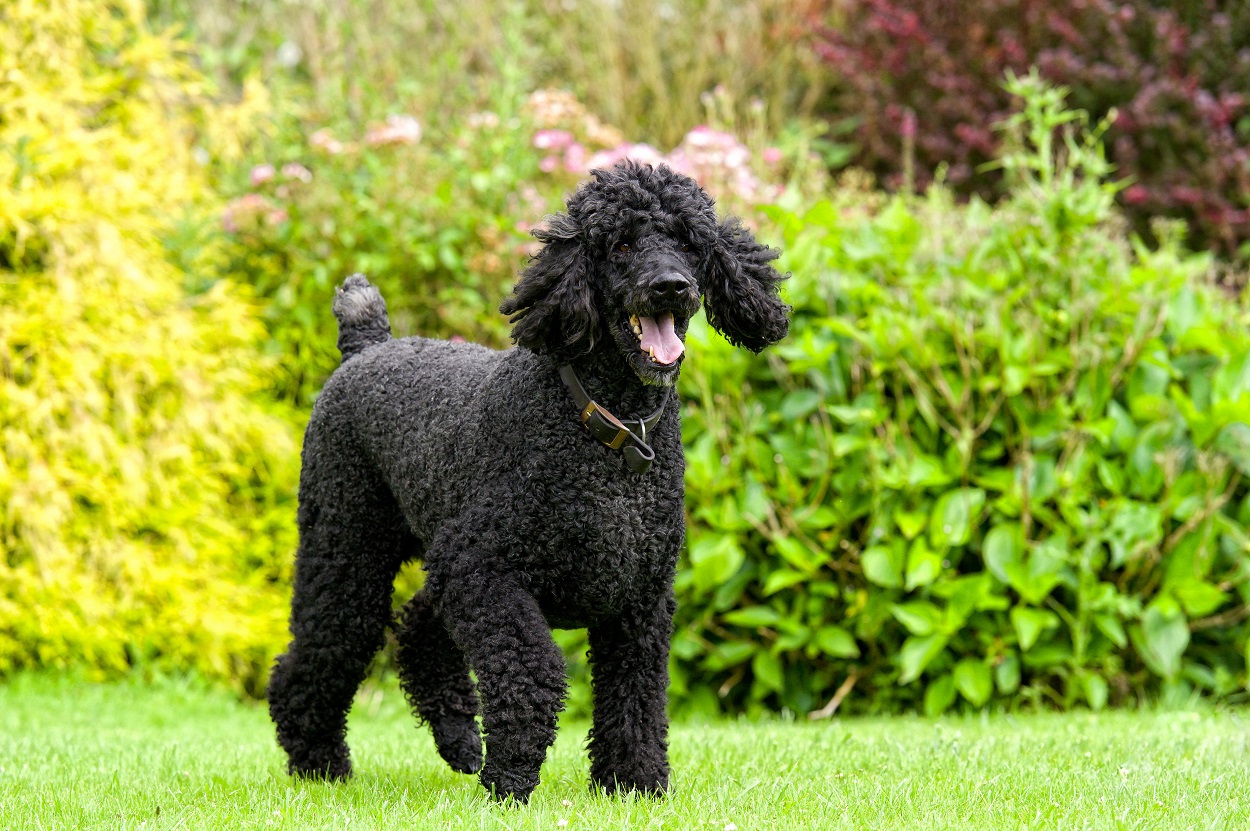
The standard poodle is the largest type of this breed. These dogs can weigh between 45 and 80 pounds, standing up to 23 inches high.
Standard poodles are easy to train. Although this breed doesn’t look especially intimidating at a glance, poodles can be alert and effective guard dogs as well as adorable pets.
Poodles mix well with other dogs, and they also tolerate children well, meaning this breed remains a popular choice among those seeking pets capable of integrating with the whole family.
Miniature
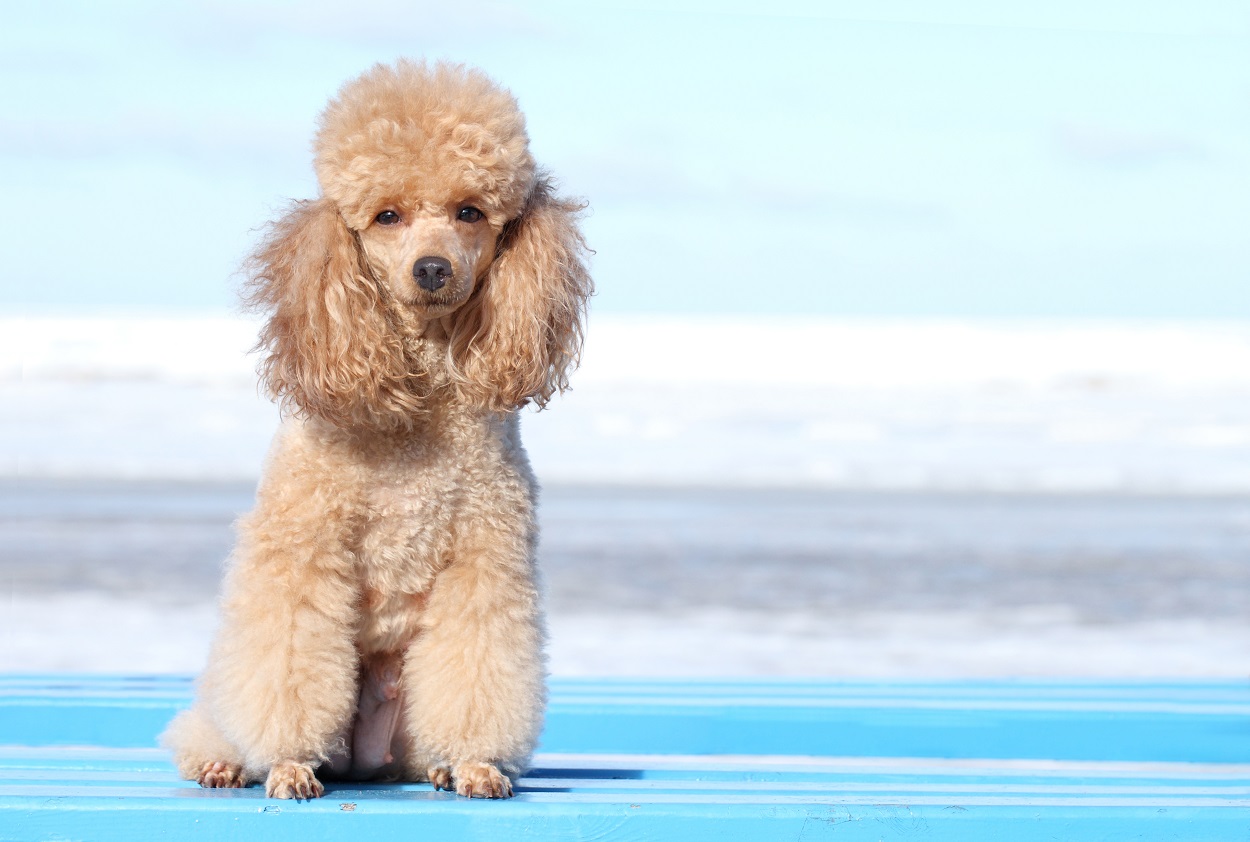
A miniature poodle, despite the name, is a mid-sized canine by U.S. standards. Weighing between 14 and 18 pounds, this type of poodle stands from 11 to 16 inches tall.
Even though the miniature poodle is a dinky dog, it has an abundance of personality.
This type of poodle is perhaps the best bet if you have small kids at home.
Toy
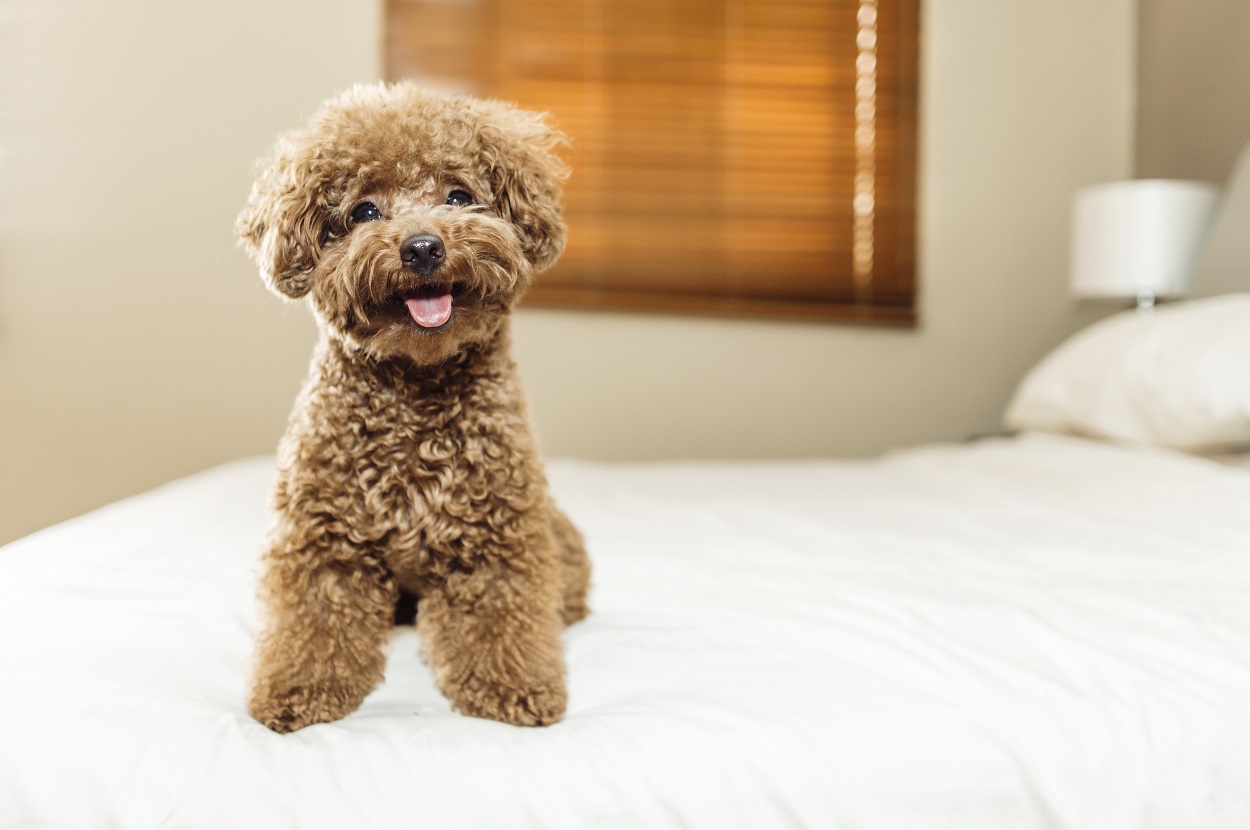
The toy poodle is the smallest official type recognized by the American Kennel Club. Weighing in at under 10 pounds and standing just 8 inches high, the toy poodle is a bona fide lap dog that would work well in almost any household.
One of the many benefits of the toy poodle is the fact they need very little exercise. If you live in an apartment or you have mobility issues, this is one breed that won’t be constantly pestering you to head outside for walkies.
Are There Sub-Types of Poodles?
There are three additional poodle sub-types you may encounter:
-
- Royal standard
- Klein
- Teacup
Royal standard
Although most organizations do not recognize the royal standard variant of poodle – it is routinely classified as a standard poodle – some bodies recognize this sub-type.
Weighing between 50 and 80 pounds, the royal standard is thicker and heavier than a standard poodle. You will also notice that the chests and feet of this poodle sub-type are also more substantial.
You can expect the same characteristics and temperament from all poodles, regardless of type.
Klein/moyen
A klein poodle, sometimes known as a moyen poodle, is popular in the United States, even though it is not officially recognized as a valid poodle type by the AKC. As with the royal standard poodle, many organizations lump in this variant of poodle with the standard poodle.
The klein or moyen poodle is widely recognized in Europe.
Teacup
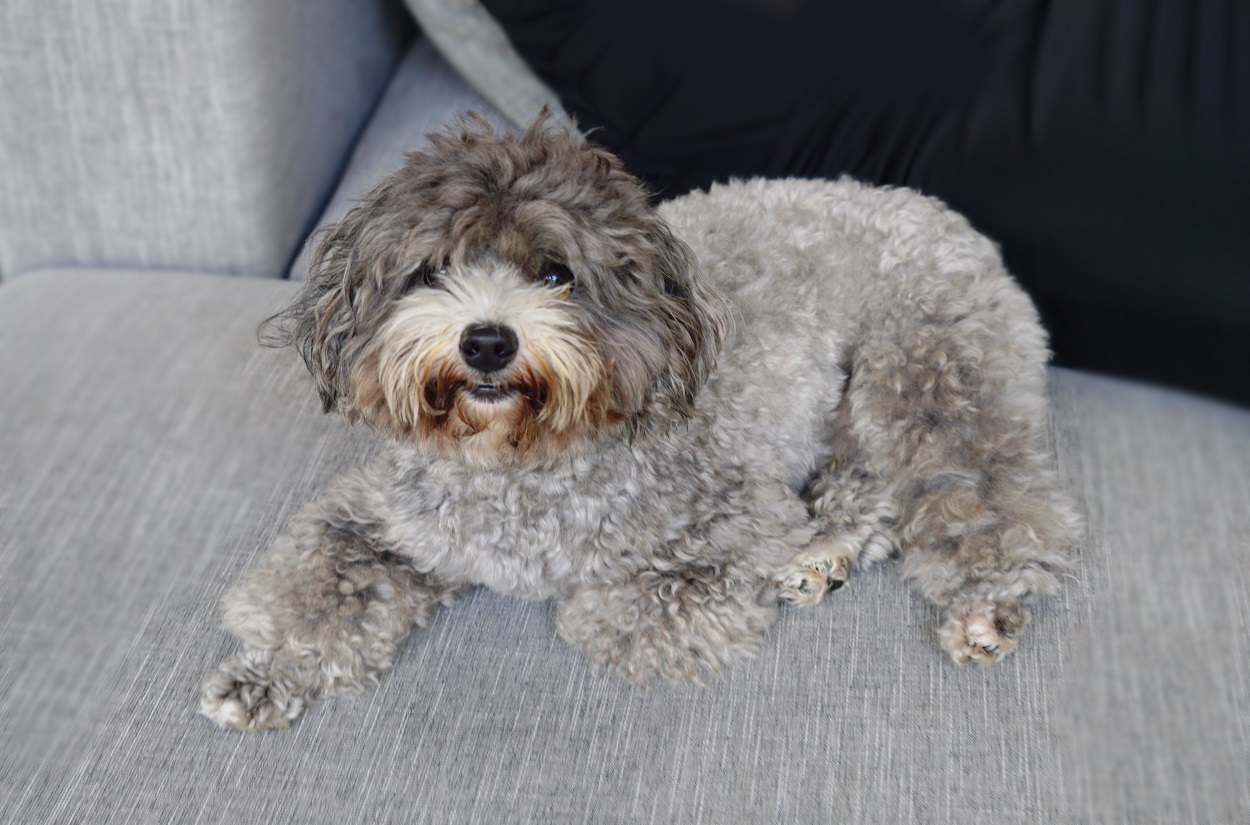
A teacup dog is an unofficial distinction that is not recognized by the majority of major dog breed registries. Among dog breeders and enthusiasts, though, the teacup dog is widely recognized.
Without official guidelines, there is no fixed size blueprint for a teacup breed. Most pups given this distinction weigh only 5 or 6 pounds. They really are tiny!
Buying a dog involves making a number of highly personal decisions. Overall, though, most teacup breeds are not the smartest choice for inexperienced pet parents. It is through unnatural breeding practices that these micro-dogs are so small. As such, they are often prone to negative health complications.
Poodle mixes
Additionally, you can find many different variants from the pure-bred poodles listed above. These hybrids result from crossbreeding over generations, giving you the doodle in many different guises, including:
- Bichon: If a poodle is crossed with a bichon frise, you are rewarded with a bichon poodle. This doodle was originally bred in Australia back in the 1990s. These bichons come in both toy and miniature form.
- Goldendoodle: A goldendoodle is the result of a poodle crossed with a golden retriever. Playful, friendly dogs, their coats do not shed excessively. Goldendoodles come in both standard and miniature form.
- Shihpoo: When a shih tzu is crossed with a miniature or a toy poodle, this generates the shihpoo. These tiny dogs are incredibly cute, coming with either long and straight coats or curly coats.
- Cockapoo: When a poodle of any size is crossed with a cocker spaniel, this leads to the cockapoo, a small dog with trademark poodle curls.
- Cavapoo: Crossing poodles with King Charles spaniels, gives you the twee cavapoo. These dogs are usually shorter than the cockapoo. Smart, fun-loving, and more reserved than cockapoos, is the cavapoo the poodle of your dreams?
- Labradoodle: Mixing poodles with labrador retrievers yields the labradoodle, an enduringly popular doodle in the United States and elsewhere throughout the world.
As you can see, there are many common poodle mixes available for those who want a pet that makes a real statement.
It is worth pointing out that you should never rush into bringing any dog home. If all goes well, you could be living with your furry friend for 15 years or more, so make certain that you invest in a breed that will suit you and your family.
In closing today, a few words about the coloring of the different types of poodles.
Poodle Coloring
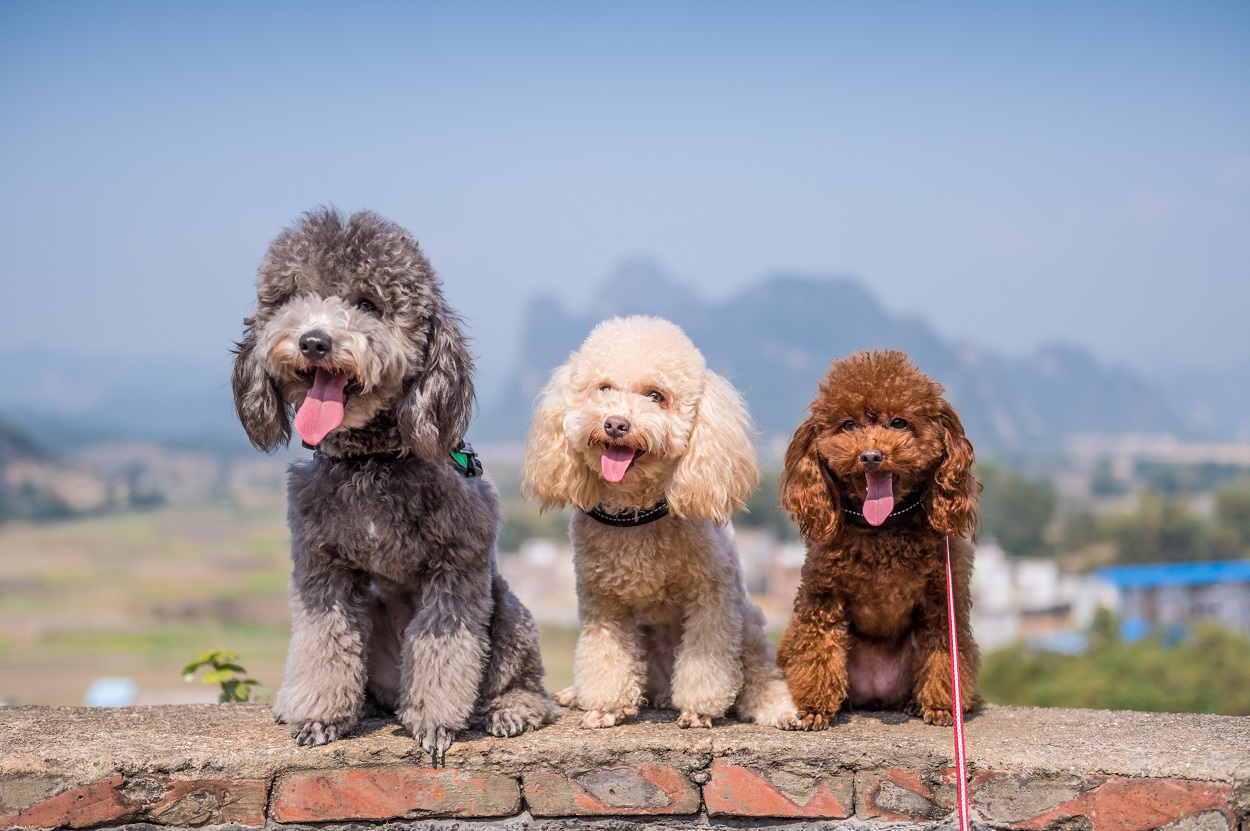
Purebred poodles come in a staggering array of colors. In some cases, their coats boast a combination of colors.
Solid coats on poodles are found in these colorings:
-
- White
- Black
- Apricot
- Blue
- Chocolate
- Reed
- Café-au-lait
- Silver
Only solid colored poodles are allowed to compete in the ring of AKC shows, although multi-colored poodles sometimes appear elsewhere in the show.
Occasionally, poodles come with markings on their coats. When this occurs, the coat is predominantly white and has small patches or spots of another color along with phantom markings. A phantom poodle is not a different type, but rather a dog with two colors on its coat.
A sable poodle has hairs with black tips.
If you encounter an abstract poodle, also known as a mismark poodle, these dogs are less than half white, featuring another coat color alongside.
Despite these variations, the most common poodles come with coats in one solid color.
Conclusion
We very much hope that today’s guide has cleared up any confusion concerning the different types of poodles.
If you are still considering a teacup poodle, you should steel yourself for a more demanding pet ownership experience. If, on the other hand, you stick with a classic poodle type, you’ll get a furry friend who is not only loyal and lovable, but also highly protective. While they might not be classic guard dog material, this breed is fiercely protective of property and family.
Before you head off today, bookmark our blog. We have a very busy content calendar for the looming holiday season here at GO Boxer Rescue, so pop back soon and don’t miss out!
